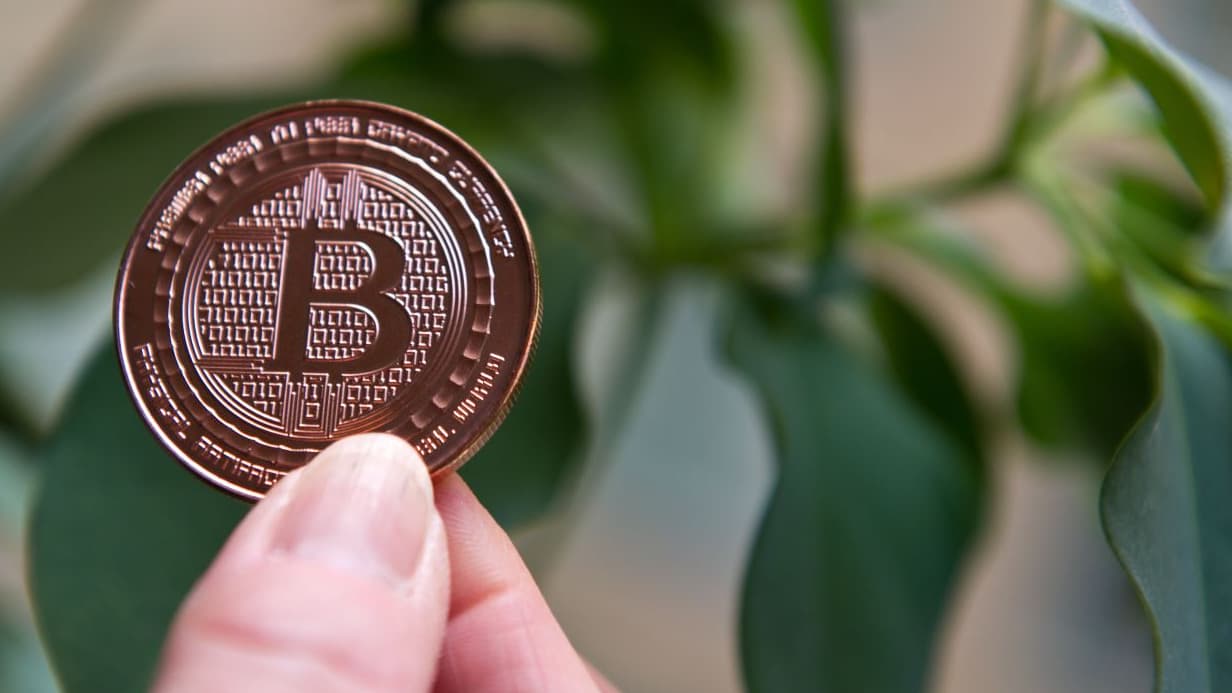If more and more French people are holding cryptocurrencies, there are still few works on this topic aimed at the youngest in France.
At what age can we talk to children about Bitcoin? The question arises when the illustrated book Little Satoshi and the Creation of Bitcoin, aimed at 4-8 year olds, just came out. “Last spring, my 5-year-old son asked me a question I didn’t expect. ‘Dad, what is Bitcoin?’ He often heard this term because it is an integral part of my daily life and yet I had a lot of trouble explaining it to him,” Goku, a cryptocurrency popularizer and author of the book, told BFM Crypto.
Indeed, “how can you approach such complicated concepts like blockchain and bitcoin with a child when it’s sometimes complicated for adults themselves?” he adds. As a reminder, the queen of cryptocurrencies, Bitcoin, is only 15 years old. Although this is a sector that is gaining momentum as an alternative to the traditional economic system, there is still little literature on the subject… especially aimed at the smallest.
This illustrated book intends to “initiate the beginnings of reflection in children” about the cryptocurrency ecosystem. It is necessary to educate children about Bitcoin from an early age, because “the current younger generations will be the true Bitcoin users of tomorrow,” believes Goku. He tested the reading of his book to several children aged 5 to 10 years.
“I noticed that depending on the age and maturity of the child, the book could be read several times. The younger ones will be more sensitive to the illustrations, while the older ones will join the game and try to answer simple questions to install the work,” he says.
Despite efforts to popularize and illustrate, some defined terms lack depth, for example bitcoins are described as “rare pieces of computer code” or often associated with “magic”. This can develop a child’s imagination without raising awareness of its everyday use, although a few examples are given.
Little Satoshi however, it has the merit of addressing children’s cryptocurrency education considerations, while 10% of the French will hold cryptocurrencies in 2023 versus 8% in 2022, according to a study by Adan and KPMG. Likewise, adults with children who do not own cryptocurrencies can turn to books to explain the subject to their children. In France, we can count the number of bitcoin illustrated books for toddlers on the fingers of one hand.
Growth in the United States
Before Little Satoshi, others participated in the exercise like Amélia Rosa The money of the future Bitcoin or Little Honey Badger and the Mysteries of Bitcoin by Benjamin Colombier. Why are there so few works on this subject in France? “In general, it can be said that the financial education of children has little content. In cryptocurrencies, this can also be explained by the typical profile of holders who are rather young and who are not necessarily parents yet,” emphasizes Edouard Gallego, editor-in-chief. for crypto publisher Konsensus Network.
On the other hand, in other corners of the globe it is a booming industry. For example, in the United States, where the crypto ecosystem is more developed, there are many illustrated books about Bitcoin. One of the most famous is Michael Caras with the name Bitcoin Money: The Story of How Bitville Discovers Good Money Or The story of Bitvilla who discovered good money. Similarly, Tuttles Twins, an American cartoon that deals with economic concepts for young people, recently released a episode on bitcoin.
In addition to toddlers, some books in France are trying to popularize the ecosystem among teenagers, such as ofAlice in crypto land by Daniel Villa Monteiro and Crypto Dystopias 2035 by Benjamin Loiseau, both came out this year.

